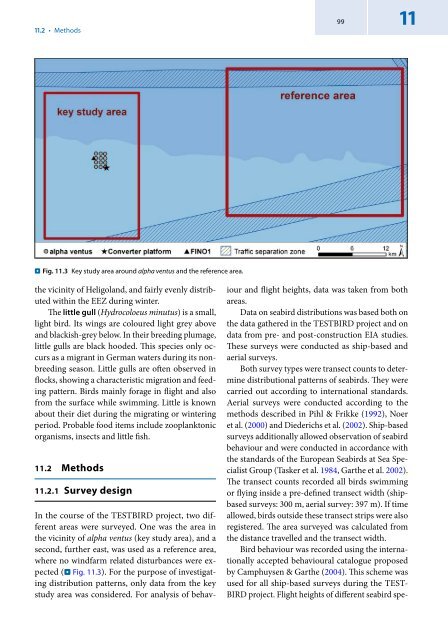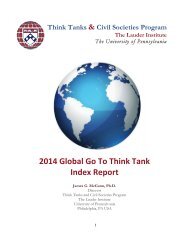bok%3A978-3-658-02462-8.pdf?auth66=1398409209_a0514c2b8e531c058ab8b810a0cad74d&ext=
bok%3A978-3-658-02462-8.pdf?auth66=1398409209_a0514c2b8e531c058ab8b810a0cad74d&ext=
bok%3A978-3-658-02462-8.pdf?auth66=1398409209_a0514c2b8e531c058ab8b810a0cad74d&ext=
- No tags were found...
Create successful ePaper yourself
Turn your PDF publications into a flip-book with our unique Google optimized e-Paper software.
11.2 • Methods99 11..Fig. 11.3 Key study area around alpha ventus and the reference area.the vicinity of Heligoland, and fairly evenly distributedwithin the EEZ during winter.The little gull (Hydrocoloeus minutus) is a small,light bird. Its wings are coloured light grey aboveand blackish-grey below. In their breeding plumage,little gulls are black hooded. This species only occursas a migrant in German waters during its nonbreedingseason. Little gulls are often observed inflocks, showing a characteristic migration and feedingpattern. Birds mainly forage in flight and alsofrom the surface while swimming. Little is knownabout their diet during the migrating or winteringperiod. Probable food items include zooplanktonicorganisms, insects and little fish.11.2 Methods11.2.1 Survey designIn the course of the TESTBIRD project, two differentareas were surveyed. One was the area inthe vicinity of alpha ventus (key study area), and asecond, further east, was used as a reference area,where no windfarm related disturbances were expected(. Fig. 11.3). For the purpose of investigatingdistribution patterns, only data from the keystudy area was considered. For analysis of behaviourand flight heights, data was taken from bothareas.Data on seabird distributions was based both onthe data gathered in the TESTBIRD project and ondata from pre- and post-construction EIA studies.These surveys were conducted as ship-based andaerial surveys.Both survey types were transect counts to determinedistributional patterns of seabirds. They werecarried out according to international standards.Aerial surveys were conducted according to themethods described in Pihl & Frikke (1992), Noeret al. (2000) and Diederichs et al. (2002). Ship-basedsurveys additionally allowed observation of seabirdbehaviour and were conducted in accordance withthe standards of the European Seabirds at Sea SpecialistGroup (Tasker et al. 1984, Garthe et al. 2002).The transect counts recorded all birds swimmingor flying inside a pre-defined transect width (shipbasedsurveys: 300 m, aerial survey: 397 m). If timeallowed, birds outside these transect strips were alsoregistered. The area surveyed was calculated fromthe distance travelled and the transect width.Bird behaviour was recorded using the internationallyaccepted behavioural catalogue proposedby Camphuysen & Garthe (2004). This scheme wasused for all ship-based surveys during the TEST-BIRD project. Flight heights of different seabird spe-




